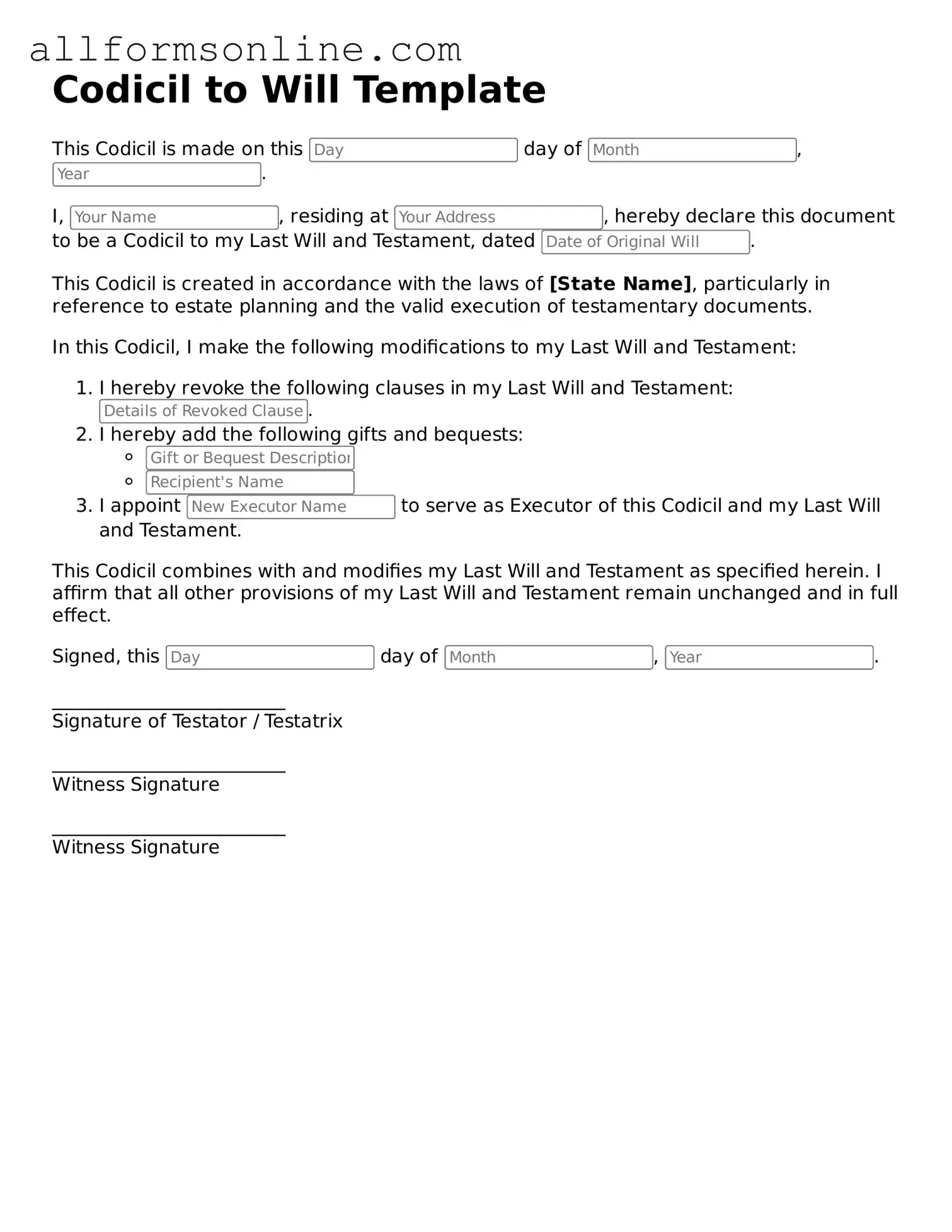What is a Codicil to a Will?
A codicil is a legal document that allows you to make changes to an existing will without needing to create an entirely new one. It can add new provisions, modify existing ones, or even revoke certain parts of the will. This flexibility is useful when you want to update your estate plan due to changes in circumstances, such as marriage, divorce, or the birth of a child.
How do I create a Codicil?
Creating a codicil is relatively straightforward. First, you should clearly state that the document is a codicil to your existing will. Include your name, the date, and a reference to the original will. Next, specify the changes you wish to make. Finally, sign the codicil in accordance with your state's requirements, which typically involve having it witnessed or notarized.
Do I need a lawyer to create a Codicil?
While you can create a codicil on your own, consulting a lawyer is advisable, especially if your changes are complex or if your estate is substantial. A legal professional can ensure that the codicil is properly drafted and executed, helping to avoid potential disputes or challenges later on.
Can I use a Codicil to revoke my entire Will?
No, a codicil is designed to modify an existing will, not to revoke it entirely. If you wish to revoke your will, you typically need to create a new will that explicitly states your intention to do so. Alternatively, you can destroy the original will, but it’s best to follow legal procedures to avoid confusion.
Is a Codicil valid in all states?
Yes, a codicil is generally valid in all states, but the specific requirements for its creation and execution can vary. It’s essential to follow your state’s laws regarding the witnessing and notarization of the document to ensure it holds up in court.
How does a Codicil affect the original Will?
A codicil acts as an amendment to your original will. It should be read in conjunction with the will, and any changes made by the codicil will take precedence over conflicting provisions in the original document. Therefore, it’s crucial to keep both documents together and inform your executor about their location.
What happens if I don’t properly execute my Codicil?
If a codicil is not properly executed according to state laws, it may be deemed invalid. This can lead to confusion regarding your estate wishes and could result in the original will being upheld without the intended changes. To avoid this, ensure that you follow all legal requirements when creating and signing your codicil.
